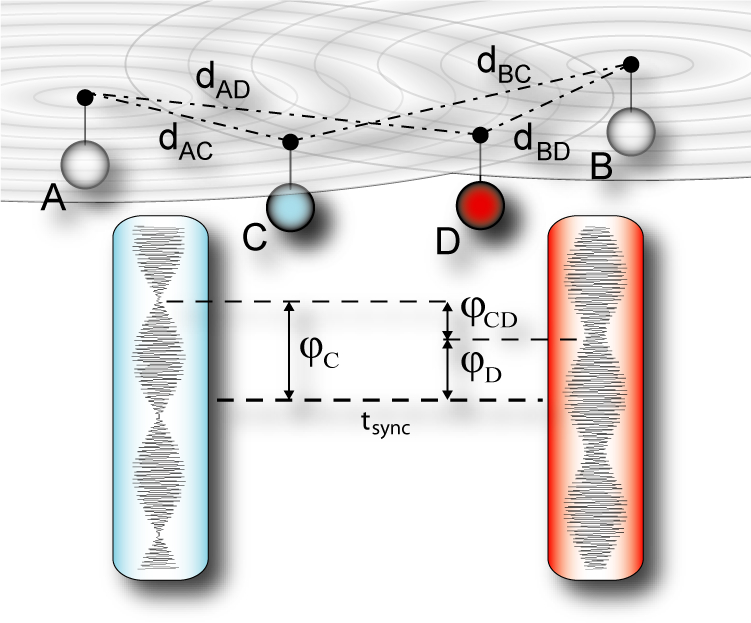Radio Interferometric Localization
NEST | Countersniper | RIPS | Timesync | Documents | Download
The Radio Interferometric Positioning System (RIPS) utilizes standard MICA2 motes for self localization. The technique relies on a pair of nodes emitting radio waves simultaneously at slightly different frequencies. The carrier frequency of the composite signal is between the two frequencies, but has a very low frequency envelope. Neighboring nodes can measure the energy of the envelope signal as the signal strength. The relative phase offset of this signal measured at two receivers is a function of the distances between the four nodes involved and the carrier frequency. By making multiple measurements in an at least 8-node network, it is possible to reconstruct the relative location of the nodes in 3D. Our prototype implementation on the MICA2 platform yields an average localization error as small as a few centimeters at a range of up to 170 meters. In addition to this high precision and long range, the other main advantage of the Radio Interferometric Positioning System (RIPS) is the fact that it does not require any sensors other than the radio used for wireless communication.
